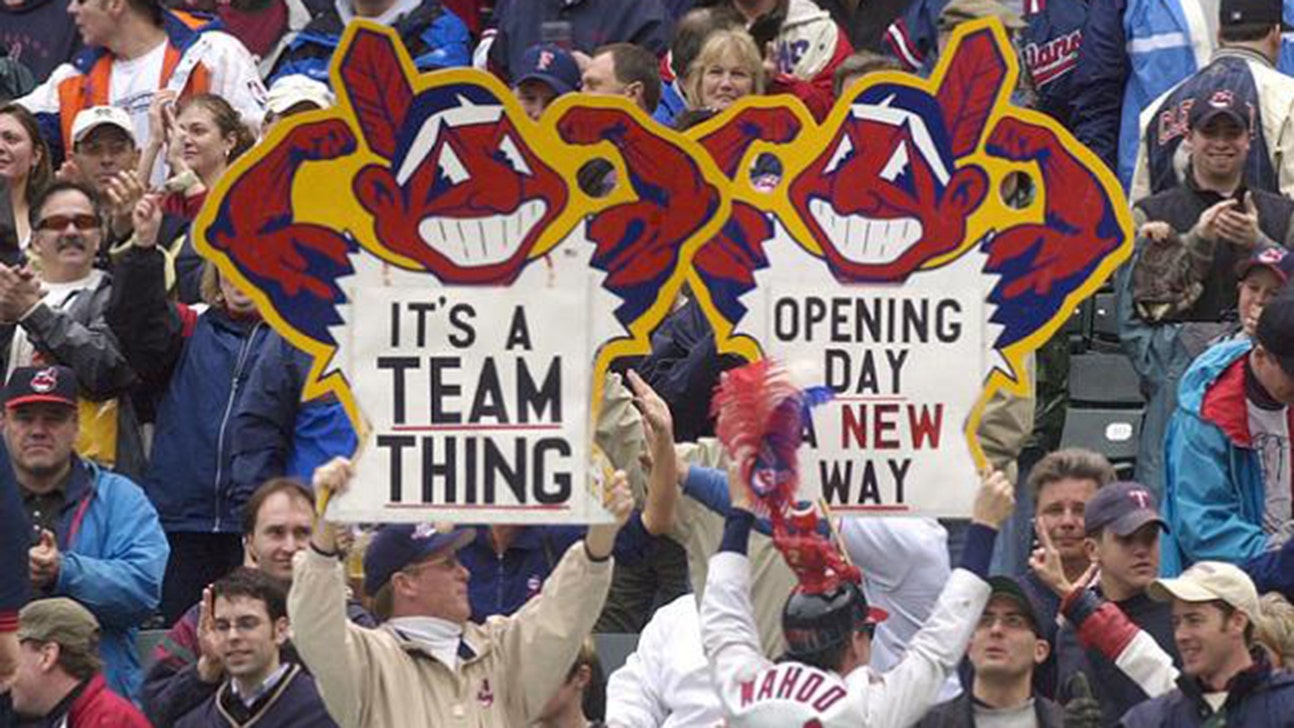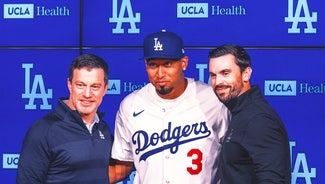
Is there life after Chief Wahoo ... for Chief Wahoo?

While in Arizona last month, I visited the Indians’ facility in Goodyear. While waiting in the office for the clubhouse to open, I noticed a huge collage, covering a wall just inside the entrance, that included various images from the franchise’s long history -- some of which inevitably included depictions of Chief Wahoo.
Later, I swung by the ballpark’s gift shop, where one might purchase not just one, but two different Chief Wahoo bobbleheads; one based on the current Wahoo, the other on the late-1940s version. Oddly, these apparently can’t be purchased on the Indians’ website; maybe they were left over from before the recent marginalization of Wahoo?
None of this bothered me much. Actually, the mural in the office didn’t bother me at all. Seeing all those Wahoo bobbleheads -- toys for kids, really -- did rankle a bit. But we’ve seen the beginning of the end, and I’m able to actually imagine the end. Even Indians fans who embrace Chief Wahoo seem to realize that he’s on his way out.
The question isn’t whether Chief Wahoo (and other manifestations of historical prejudice) will be stricken from general usage, but rather when ... and what happens after that. This latter question came to mind again when I read about a Canadian hockey team that’s planning to use a logo that some are calling offensive for a throwback uniform next season.
Mind you, the caricature of this Native American “Warrior” doesn’t look anything like Chief Wahoo. In fact, he’s not even particularly warriorlike, except for holding a tomahawk in a vaguely threatening way. But the Canadians have been a bit more, shall we way, “sensitive” toward their first peoples? Shoot, they’ve got an entire (and massive!) territory now; can you imagine the U.S. congress handing over Montana or Alaska to its original inhabitants?
I sure can’t.
Anyway, the question at hand is this: Once an “offensive” image has been retired, must it remain in mothballs forever? Should it also be scrubbed from historical references like media guides, retro T-shirts and office décor?
Here’s the short answer: There is no short answer. Not a satisfying one, anyway.
There will always be one vocal minority in favor of doing nothing, and another in favor of doing everything. You might be surprised to learn that if I had to choose between those two extreme options, I would choose the former.
Fortunately, that’s not our choice. As with most things, we can settle somewhere in the middle, and the tricky thing is figuring where your middle is.
Would I walk around in public wearing this T-shirt? No, I would not. Because ... well, you know.
On the other hand, there’s a part of me that’s attracted to the retro nature of this T-shirt. And I still fondly remembering seeing this ancient sign during my long-ago visit to Municipal Stadium.
Fortunately, there is a way to preserve the history, and even satisfy our nostalgic feelings, while also responding to evolving attitudes and sensitivities. That ancient neon Wahoo who used to grace Municipal Stadium? He’s got a new home.
When the Indians moved to Jacobs (now Progressive) Field, there wasn’t a place for the 28-foot-tall Wahoo. So the club asked the Western Reserve Historical Society for help. One $50,000 restoration later, the Chief was ready to greet the public again:
In February of 1995, Wahoo was installed in the Western Reserve Historical Society’s lobby. The museum had expected an outcry from local Native American groups. In fact, the institution welcomed the chance to use Wahoo as a way to discuss the controversy over the image. “We addressed that head-on,” Pershey recalls.
But a funny thing happened: Pershey says the protests he and others expected never came. He credits that to the fact that the museum never shied away from the opinion that Wahoo was and remains an offensive image to some people.
It was the latter group of fans that critics got worked up about. Nussbaum calls them bad fans and lumps them with viewers who would later root for Tony Soprano and Walter White.
Well, OK. Maybe. There’s a significant distinction, however: The creator of "All in the Family" was very public about his desire to turn viewers against bigotry and homophobia and misogyny, with art as his tool. Meanwhile, I suspect the artists who created Tony Soprano and Walter White simply wanted to make great art, which theoretically makes the world a better place, too.
Enough about television, though. My point is that while "All in the Family" probably did reinforce bigotry in some people and might even have created some bigotry, its creators intended exactly the opposite, and it’s my firm belief that their intentions were rewarded. Archie was almost always wrong, and so he lost almost all the arguments. And anyone impressionable enough to be influenced by something as silly as a sitcom -- a 9-year-old me, for example -- was most likely to wind up on the right side of things.
Which is only to suggest that offensive thoughts and images do have a place in our society, but most especially when they are offered with a healthy dollop of mindfulness. Frankly, I don’t think that Chief Wahoo on an actual uniform in an actual game passes that test. That context just won’t allow for mindfulness, now or in 20 years. My guess is that once Wahoo’s been expunged from the franchise’s livery, he’ll stay expunged. But that shouldn’t mean that he’s completely scrubbed from murals, or from the team museum, or from official publications.
It’s all about the meaning, and the context, and the intent. And I believe the people running the Indians -- or whatever the club is called a decade or two from now -- will eventually get this right. They’ve still got a long ways to go, though.










